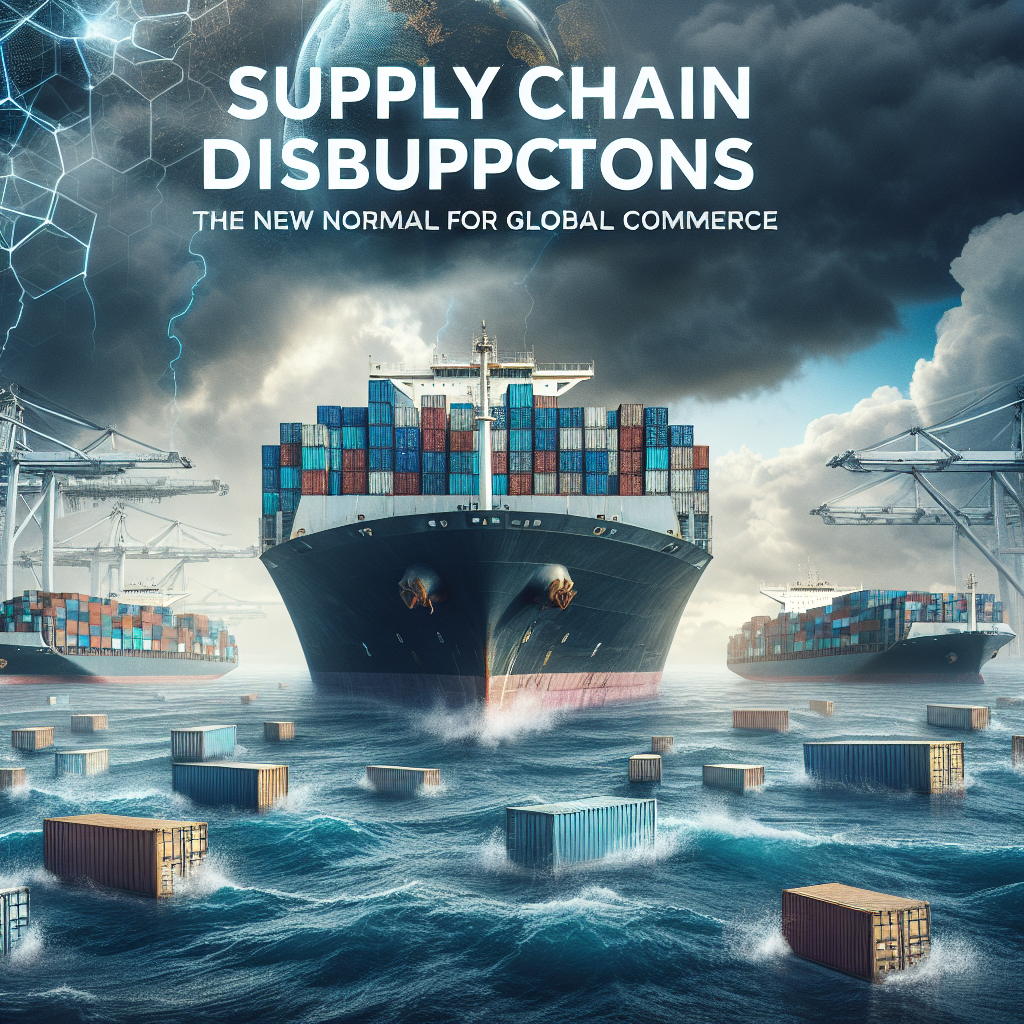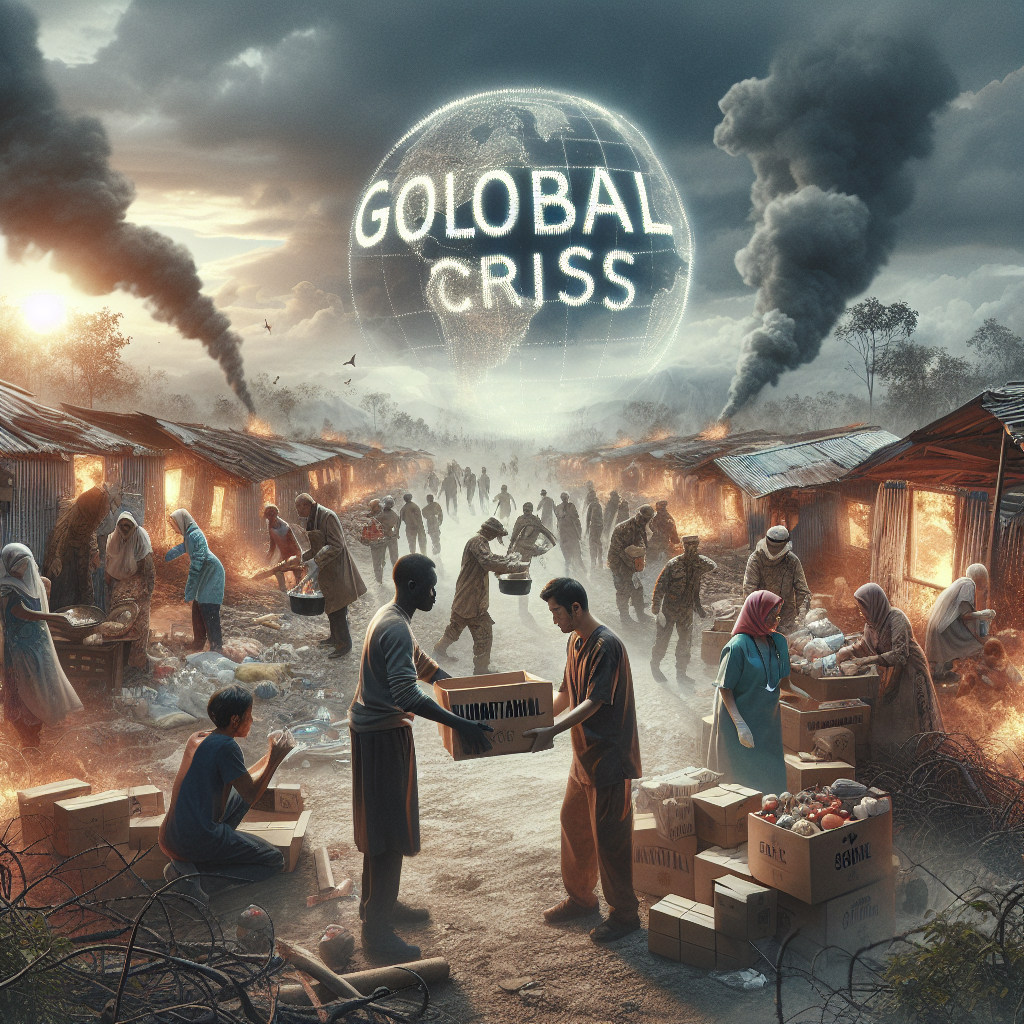Supply Chain Disruptions: The New Normal for Global Commerce
In recent years, global supply chains have faced unprecedented disruptions, revealing both vulnerabilities and opportunities for improvement within this complex network that underpins modern commerce. The COVID-19 pandemic served as a catalytic event that unveiled the fragility and interconnectivity of global trade systems. Yet, even as the world grappled with the immediate impacts of the pandemic, new challenges have emerged, underscoring a growing belief among experts that supply chain disruptions are becoming the "new normal" for global commerce.
The Cascade of Disruptions
The pandemic was the most significant disruption in recent history, but it was not the sole contributor to ongoing supply chain issues. Geopolitical tensions, such as the U.S.-China trade war, have imposed tariffs and trade barriers that complicate logistics strategies. The conflict between Russia and Ukraine further exacerbated tensions, particularly impacting energy supplies and agricultural exports. Additionally, natural disasters and climate change have heightened the frequency and intensity of disruptions, challenging logistics networks’ capacity to adapt swiftly.
The ripple effects of these disruptions are manifold. Manufacturing delays, increased shipping costs, and inventory shortages have become commonplace, affecting everything from consumer goods to critical components used in technology and automotive industries. Retailers and manufacturers alike have had to navigate these challenges with agility to meet consumer demand.
The Shift in Supply Chain Strategies
In response to sustained disruptions, businesses are reconsidering their supply chain strategies. Companies have increasingly prioritized supply chain resilience over efficiency, realizing that a heavy reliance on single suppliers or geographic regions can lead to vulnerabilities. Diversification of supply sources, nearshoring, and reshoring have emerged as pivotal strategies to mitigate risk. By localizing supply chains, businesses hope to reduce transit times, minimize exposure to global volatility, and enhance control over their production processes.
Digitization and technological innovation have also become central to modern supply chain management. Advanced technologies such as artificial intelligence, machine learning, and blockchain are being leveraged to improve visibility, efficiency, and predictive capabilities. These tools enable real-time monitoring of supply chain activities and enhance the ability to predict and respond to disruptions before they escalate.
The Role of Government and Policy
Governments worldwide are recognizing their role in stabilizing supply chains and are taking steps to address these challenges. Policy interventions, such as incentivizing domestic production and investing in infrastructure, are being deployed to strengthen national supply chains. Collaborative efforts among nations are also critical to fostering resilient global trade networks that can withstand shocks.
Additionally, policymakers are increasingly acknowledging the impact of climate change on supply chain stability. Addressing sustainability concerns, they are encouraging businesses to adopt eco-friendly practices that not only appeal to environmentally conscious consumers but also ensure long-term viability against future climate-related disruptions.
Looking Forward: Embracing Resilience
The reality of ongoing supply chain disruptions calls for a paradigm shift in how businesses structure and manage their logistical operations. No longer can companies afford to maintain supply chains that prioritize cost-cutting over adaptability and resilience. Instead, the new normal necessitates investment in technologies, diversification of risks, and strategic partnerships that enhance flexibility.
For global commerce to thrive amid this era of uncertainty, collaboration between industries, governments, and technology providers is essential. By fostering innovation and sustainability, supply chain stakeholders can transform current challenges into opportunities for robust and resilient networks.
In conclusion, supply chain disruptions are here to stay, influenced by a multitude of factors ranging from geopolitical dynamics to climate change. The companies that proactively invest in resilience and adaptability will be better positioned to navigate this new normal, ensuring that they not only survive but also thrive in an ever-evolving global marketplace.














Leave feedback about this
You must be logged in to post a comment.